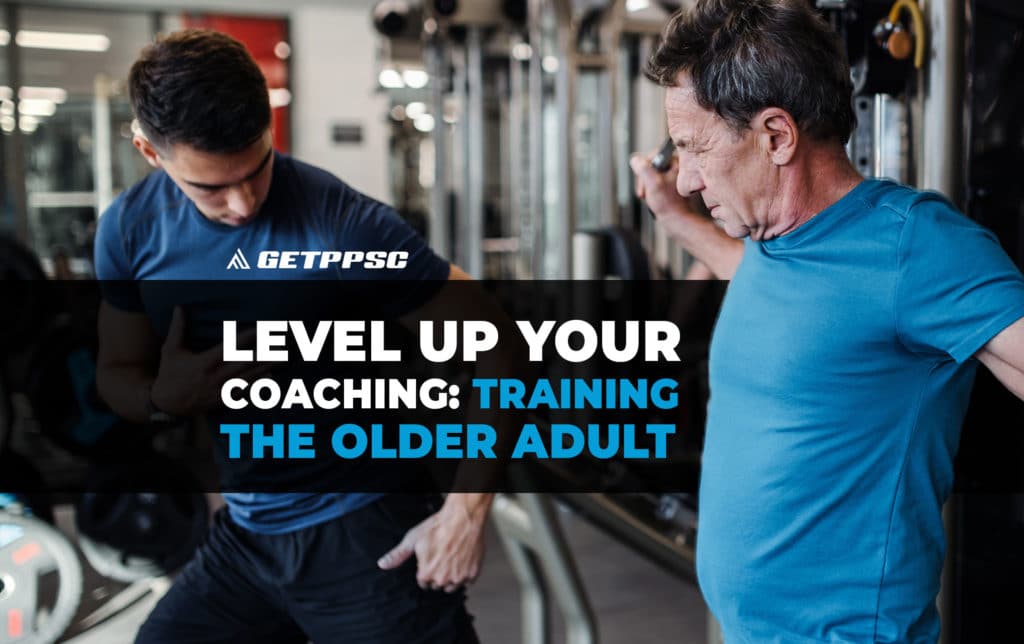I started this article by digging into a bunch of research and then I realized that we’d already posted an article that covered it really well – thanks to Dr Justin Farnsworth! If you haven’t read it yet, click here.
So, now we can talk about how we take that fiery call to action and put it into practice in real life. From my 20+ years in the industry, training clients from 6-92 years old, I’ve seen 3 repeated mistakes and I’ve got 3 helpful strategies. But first, here’s a story:
Over a 4-year period of time, my mom cared for her aging parents in our home. They both lived into their 90’s and where my grandpa played golf on his 96th birthday, my grandma was much more of a homebody. She was a wonderful woman – I got to see her almost everyday from age 3-17 and I feel very lucky for that. Here’s a few things I remember really clearly about her:
• She drank tea with honey & lemon at 3pm everyday (from a proper china tea cup with a saucer)
• She loved to be out in the garden around the house and she showed me how to pinch the flower gently so that you could open a Snap Dragon’s mouth
• She called a nap a “snooze” and she did NOT snore
• Towards the end of her life, when I came home for a visit, I helped her with her “workout” one day – 2lb dumbbell curls and some high knee steps. She hated it.
That “workout” really sticks in my mind. It was useless. I suppose I understand why the therapist had recommended it. It came from the same “safe” “accessible” and “supports daily movement needs” place as the more brutally honest “it’s too late.”
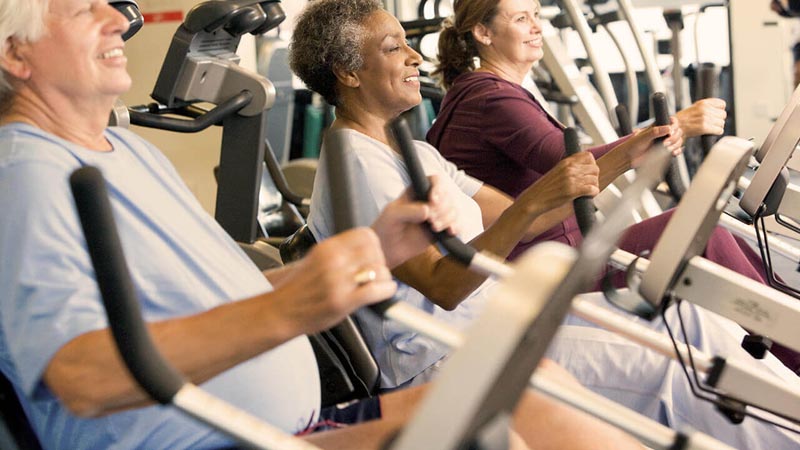
It was a different time. We’ve come a long way. (Remember those underwear-on-the-outside aerobics outfits?) My mom provided an incredible amount of care for her parents. But it also motivated her to write a different ending to her own story.
I got her working 2x a week with a personal trainer back in 2014 and she continues that to this day. She does barbell deadlifts, KB swings, loaded reverse lunges, pushups, LOTS of planks, side planks, dead bugs and bridges. She’s lean and strong and can feel her core when she stands at the sink to do the dishes. She’s got a whole drawer full of Lululemon tights. She also:
• Brings her groceries in from the car in one trip
• Carriers her backpack & suitcases in and out of the house, the car, the airport, the hotel, the train, the boat, etc. when she travels
• Carries her laundry upstairs & downstairs between the 2 levels of the house
• Pulls bushes out of the garden when it’s time for a new landscaping design and trims at all heights (from deep squats to overhead work)
• Helps friends move from their houses into their “I’m downsizing” condos (think “PIVOT!”)
• Arm wrestles me for the bill when we go to dinner (and has taught me how to lose with both grace and gratitude!)
I’m proud and inspired by her little workout update texts. But here’s the reality – if we’re going to get more of our population to be proactive about healthy aging, we need to make sure our system is inviting, trustworthy, supportive, smart, effective, pain-free, scalable and reliable. The PPSC is exactly that. Let’s dig into how to apply it to our older adult clients.
MISTAKE #1 – EVERYBODY AGES

EVERYBODY GETS GRUMPY, STIFF & WEAK SO, STRETCH MORE, GO LIGHT & DON’T EXPECT TO MAKE PROGRESS AKA SETTLE
SOLUTION #1 – KEEP YOUR STANDARDS HIGH & YOUR MOVEMENTS STRONG.
Use screens and assessments to verify capability & access. Modify screens to ensure clients have a safe & successful experience. Show them what they CAN do and what IS available. Running an OA-friendly Plan Smarter Strategy Session (one of the key actionable takeaways from the PPSC)
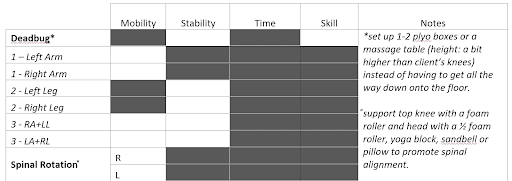

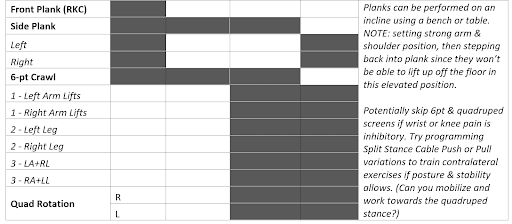
Using these tried and true methods can help bridge the gap for better training practices and more appropriate sessions with your clients.
MISTAKE #2 – ASSUMING THEY FEEL THEIR AGE
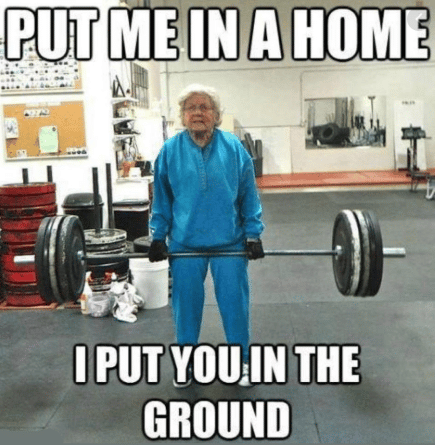
To quote my friend and PPSC badass Tasha “The Wolf” Whelan – “Bench, please!” I run a group for a bunch of ladies on Tuesday & Thursday mornings at 8am. The core members have been working out together with various trainers for years. When I started pulling this article together, I asked them to contribute their thoughts. Here’s a couple things that stood out.
“I only started going to the gym in my 40’s. Before that I had done some aerobics and gone for walks, but my doctor told me I needed to start doing resistance training. It was definitely intimidating but the instructor of the group class I started going to would always say, ‘Listen to your body – do what works for you.
The person beside you is on their own journey – take inspiration from the energy in the room but don’t let it make you feel small. The weights you lift, the reps you complete – that’s YOUR success.’ That was really helpful because I definitely started out comparing myself to the people around me who had probably been exercising for years!”
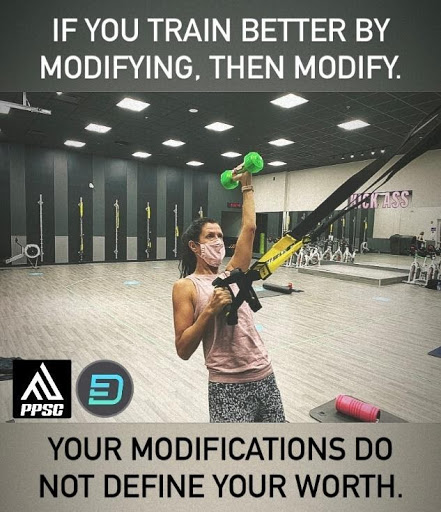
“I’ve always been active but my goals definitely changed over time. Back in the day it was all about diet, skip lunch, fit into a size small, do lots of cardio, the fitness studio is for women and the weights are for men. I always wanted to try lifting weights.
Small group training has been great because it’s the same community feel and support of the classes but now, I get to do the types of exercises I always wanted to do! I’m not sure that I would venture out onto the gym floor by myself – it feels like a totally different world.
But I love showing up with my friends for a total body functional strength workout and I know it’s helped me stay strong, stay independent and trust my body more in my day-to-day life. I’m not afraid of getting older because I know that I am capable.”
“My default is to get out my yoga mat and stretch away my pain – for years that was what the physio or doctor would recommend when my knees, hips or back was sore. I enjoy stretching and, in the moment, it often feels wonderful but, if I’m being honest, it never really solved anything.
My hips started hurting at night and it would wake me up. I started to feel more tired doing the chores I’d always done, and especially when my grandkids came along, I realized I was weak and it was a bit scary. I still felt relatively young and my perception was that it would only get worse over time!
Wanting to be able to care for my husband, support my kids by babysitting and being an active part of my grandkid’s lives pushed me to seek help getting stronger. I still enjoy my stretching but now I know that doing my core exercises at home and getting to the gym at least 3 times per week is really important!”
SOLUTION #2 – DON’T BE AN ASS(umer)
REALLY DIG IN AROUND GOALS, LIFESTYLE, HOBBIES, TRAVEL & BUCKET LIST DESIRES.
The longer you work with a client, the more important it is to check-in regularly as their goals will evolve and change over time. One of the tools I really like for client retention (keeping clients longer) is a quarterly 4-Quadrant exercise.
I’ve both handed it out and sat down with clients to work through it – while I personally prefer the engaged coaching option, both serve well enough. The key is being accountable to what’s happening in the gym but also connecting that effort to something meaningful beyond the gym!
Think of it as addressing and evolving both WHAT their goal is and WHY achieving that goal is important. Furthermore, having more than one metric to measure success can be really helpful. Especially for older adults, who may not achieve body recomposition as quickly as younger clients, being able to celebrate success in one metric (especially non-scale metrics) can tie into moving in the right direction on other metrics. (Ex. How better sleep quality will help with weight loss or reduction of pain.)
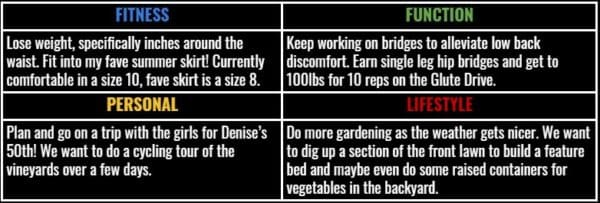
I’ll be the first to admit that when I was an athlete, the main reason I went to the gym was because I wanted to do everything I could to win the next game, make it to the championship and deliver on my promise to the coach that we’d win the trophy at least once in my 4 years.
I had this driving energy (fear?) that if I wasn’t on the field, in the gym, getting an extra session in with my goalie coach, then my competitor was outworking me and would have the edge. When I stopped playing, I experienced what we are starting to hear a lot of athletes be honest about – a big post-competition depression.
The loss of purpose, support & structure can be really hard to navigate. It took me a long time to feel like the gym and my workouts were a positive thing that was moving me forward again. It took a long time to let go of comparing myself to when I’d been in my best shape, when I’d been laser-focused and dialed in.
It was something similar to this 4-Quadrant exercise that helped me see new possibilities with my fitness. And, in all honesty, I think it also helped me do a better job of creating meaningful experiences and looking forward to a lifetime of adventures.
I struck a chord with our instructor group when I said, “Sometimes, how we work with someone, how we help them – we don’t just eliminate their pain and fear. We do something much more powerful – WE GIVE THEM THEIR LIFE BACK.”

If you’ve ever had a client or family member express their shock at receiving an “older adult” magazine in the mail for the first time, or if they get offended being asked if they qualify for the “senior’s discount” then you’ve had a glimpse of what I’m talking about. We’re here to defy the conventional story of age and show our clients just how much is available to them – in the gym and beyond.
MISTAKE #3 – OLDER ADULTS ONLY NEED “BASIC” EXERCISES
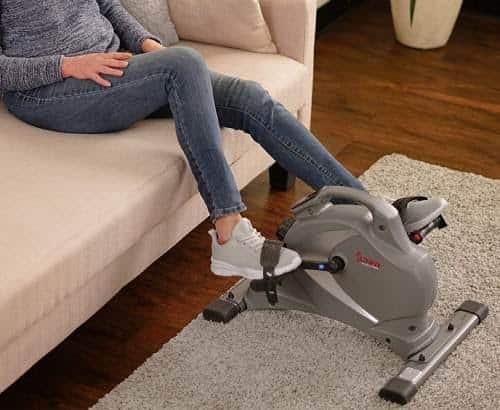
Most older adults get paired with the same old list of exercises because we assume they are fragile.
FRAGILE CIRCUMSTANCES CREATE FRAGILE PEOPLE
It is entirely possible to train someone as they age with the same intent, focus, and vigor we did as they were younger (if they are prepared). Making decisions on programming shouldn’t be done with assisted-everything but instead with exercises that maximize the output of the person in front of you. Treat a human as a human, not as a textbook situation.
SOLUTION #3 – USE “FOUNDATIONAL” STRATEGIES
While there are only some many foundational movements, the options we can explore to train them safely, efficiently and with variety are limited only by your assessment data, your equipment/space and your creativity. IF YOU WANT TO WIN, YOU CAN FIND A WAY. In this case, winning means delivering an exceptional training experience long-term as clients move through the continuum of health, fitness, and age.
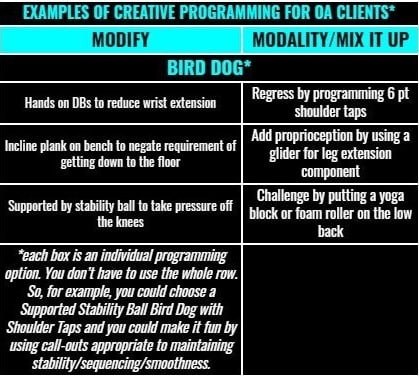
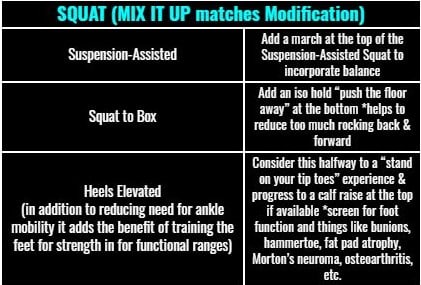
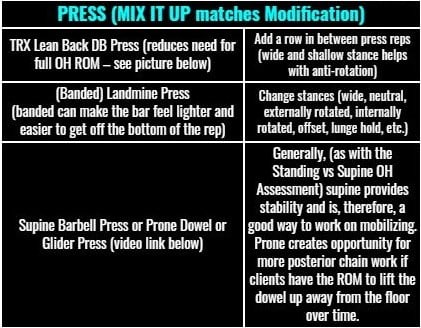
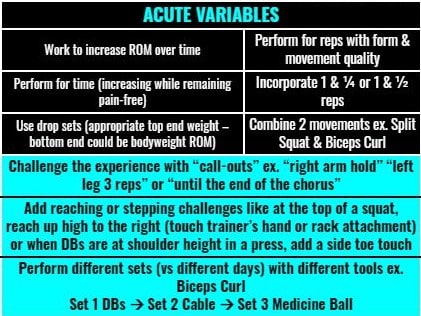
At the PPSC we say a lot of important things – including “United in Movement” and what that means to me is no boundaries. Not experience, not gender, not identity, not functionality, not age. We are all humans – humans need to squat, hinge, lunge, push, pull & carry. We need to do these movements pain-free and for the rest of our damn lives. We want to get stronger over time and we want to help our “clients elevate their training, increase their results and put their health first.” So, let’s rewrite the story of what being an older adult looks & feels like. I want to do birthday workouts with clients when they turn 100. I want them to “Carry” their own giant flaming cake into the dining room and blow out the candles in one deep diaphragmatic breath.

